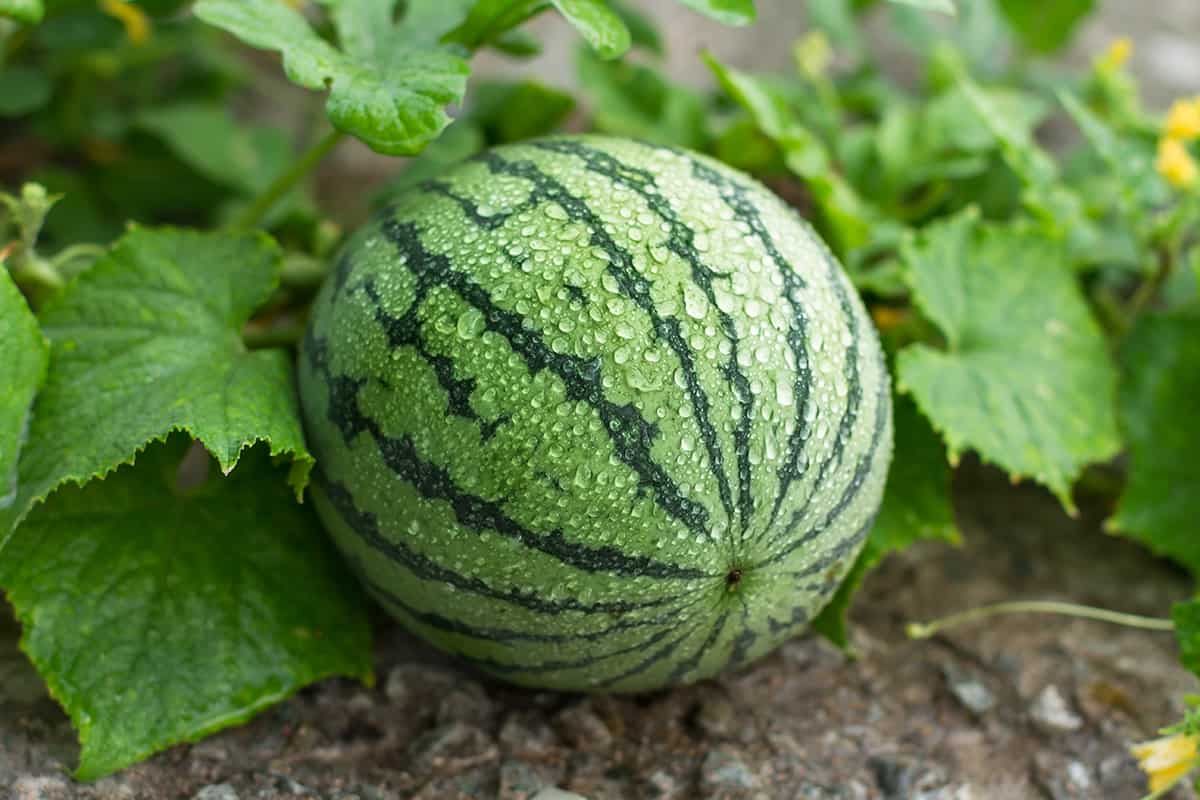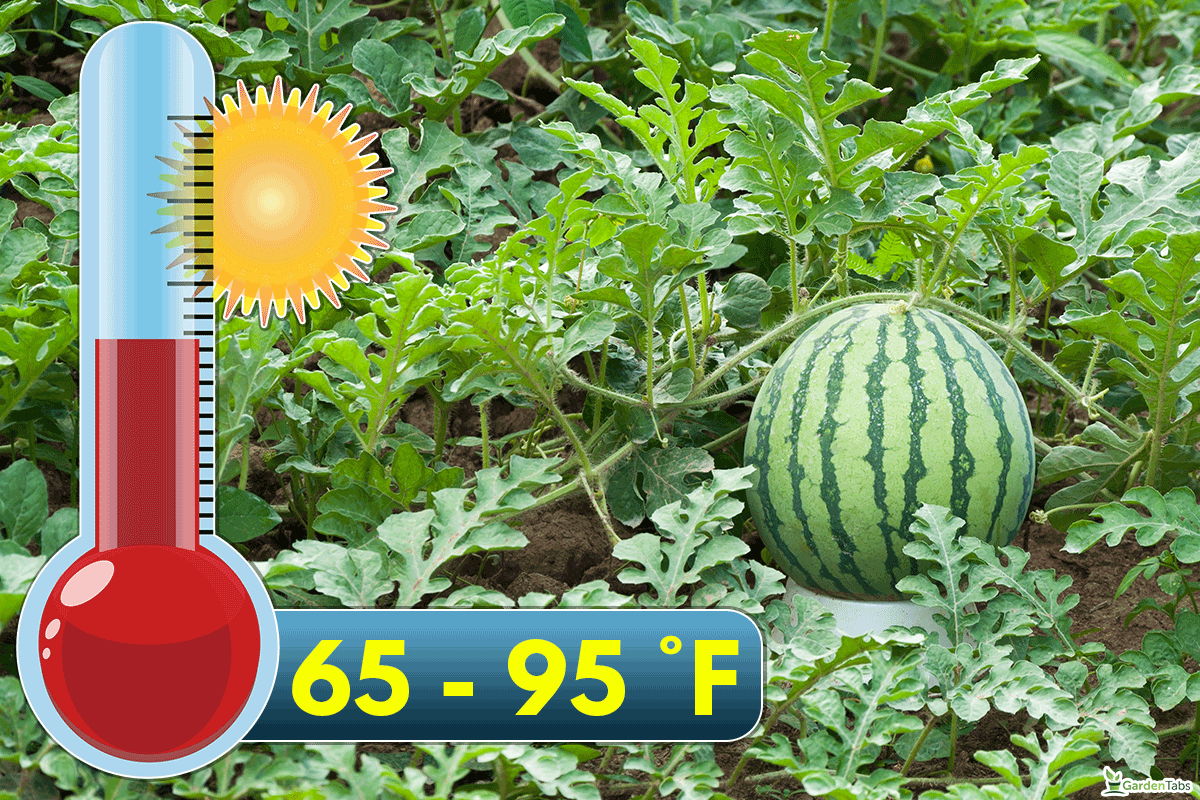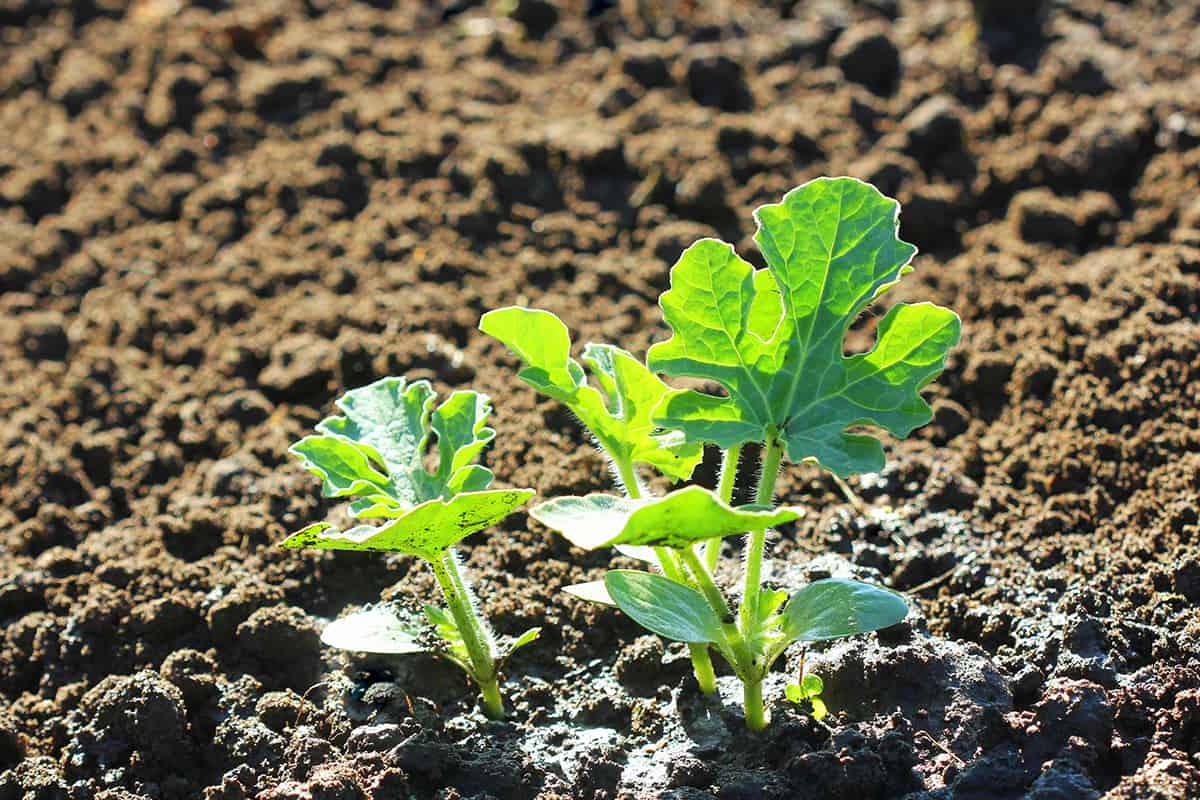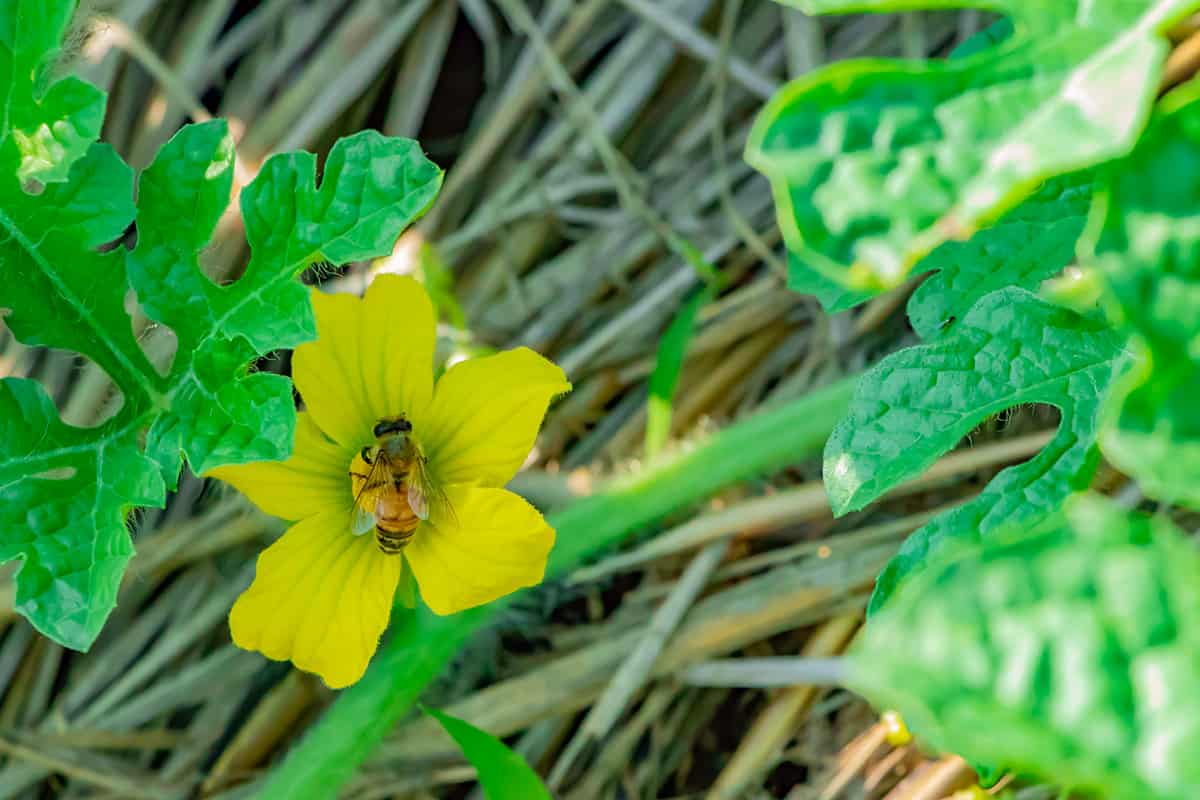Pollination is a natural process that is needed by plants to produce fruit and reproduce. That being said, can watermelons pollinate on their own, or do they need vectors to facilitate the process? Read on and find out what our research revealed.
Watermelons are capable of self-pollination since both male (stamen) and female (pistil) reproductive organs are present in the plant. However, the conditions necessary for fertilization to occur would depend on the synchronized activity of both structures. The presence of pollinators such as bees will increase the yield and improve the quality of the fruit.
The article includes the life cycle of watermelons, how to properly care for them, and a brief section regarding pollination. Read on!
Life Cycle Of The Watermelon
To fully appreciate the significance of pollination and its role in fruit yield, an overview of the watermelon's life cycle is discussed briefly in the following section.

Planting
Wrap some watermelon seeds on a damp paper towel for 2 to 3 days to promote early rooting. Pick a sunny location in your yard or garden that gets at least 8 hours of sun a day.
Plant the seeds an inch deep on loamy, well-draining soil at least 5 feet apart. Water the soil thoroughly with a light spray to avoid dislodging the seeds. Early to mid-spring would be a good time to sow.
Seed Germination And Sprouting
The process of germination begins when the seeds are introduced into the soil, but it can take approximately 10 to 12 days before you see sprouts emerging from the ground.
Keep the soil moist without overwatering. The young watermelon seedlings are vulnerable, and it may be necessary to provide row covers or cold frames.
Vegetative Growth And Branching
Rapid growth may ensue for the next 2 to 3 weeks, and you'll notice the spread of vines with true, larger foliage.
Photosynthesis provides food and energy, and new branches develop, covering most of the ground area. This would be a good time to amend the soil with organic fertilizers.
Flowering And Pollination
The male flowers begin to appear an average of 8 weeks after germination, followed by the female counterparts.
The process of pollination usually ensues once the pollen is transferred in the ova by vectors such as bees. You can pollinate the watermelons manually if bees and other insects are scarce in the area.
You can apply an NPK fertilizer ratio of 5-10-10 if pollination is successful and the fruit starts to swell and grow.
You should reduce the amount of water to avoid over-absorption by the fruit, which may affect the flavor. Overhydration produces pale watermelon flesh and a flatter taste.
Watermelon Care

It takes an average of 3 to 4 months for watermelons to fully mature, depending on the variety. The following includes proper care for watermelon in its different growth stages.
How Much Sunlight Do Watermelons Need?
Watermelons thrive in full sunlight and need at least 6 hours of exposure a day. In hotter climates, you can plant them in partial shade so they get enough morning sun and protection from the afternoon heat.
How To Hydrate Watermelons?
Watermelons need more hydrating after planting and throughout the growing and flowering stages. Keep the top 2 inches of the soil moderately moist and avoid letting the ground dry out fully.
Once the fruits begin to emerge, reduce the depth to 1 inch. Avoid watering the leaves to prevent the infestation of powdery mildew and other pests.
What Temperature Do Watermelons Grow In?

Watermelons require long periods of warm temperatures to produce a prolific and quality yield. During the growing seasons, it is best that temperatures range between 65 to 95 degrees Fahrenheit. Frigid conditions or too much heat affect their growth.
You could use cold frames and row covers to protect the plant from the weather as well as extend the growing period. These will replicate the growing condition watermelon and other vegetation are accustomed to.
What Soil Is Best For Watermelon?

Watermelons should be planted in fertile and well-draining soil. It typically prefers slightly acidic to neutral environments, so adding compost and peat moss to the soil before planting can be especially helpful.
What Is The Best Fertilizer For Watermelons?
During the beginning of the growing season, watermelons should receive adequate nutrients – a 10-10-10 balanced fertilizer could be used. However, once flowers begin to appear, change the ratio to 5-10-10.
Fertilizers high in nitrogen will keep the foliage lush and lessen its eventual fruit yield. Phosphorus and potassium will provide your watermelons with adequate nutrients necessary for flowering and fruit productivity.
Check out 10-10-10 All Purpose Fertilizer on Amazon.
Do Watermelon Plants Need To Be Pruned?
Proper pruning encourages healthy growth and promotes quality yield. You should remove yellowing leaves, as well as dead, damaged, and diseased branches, so that energy could be used by healthy and viable parts of the plant.
Pollination
Difference Between Self-Fertile And Self-Fertilizing
In strict botanical terms, self-fertilizing is the process pertaining to the pollens being fertilized in the ovule. If plants are categorized as self-fertile, they develop both the pistil and stamen in a single plant or flower.
Put simply, self-fertilization is a process, while self-fertile is a classification.
Some species are self-fertile, yet, they cannot perform the pollination process on their own, making fertilization impossible. This is especially true for watermelons, rockmelons, and honeydews.
Self-pollination
Self-pollination is the transfer of pollen grains within the same plant and flower. The process only occurs in certain species and vegetation because they develop both the male and female reproductive organs in one single bloom and within a single plant.
Vectors do not necessarily have to facilitate the pollination process unless the plant is not self-fertilizing. Watermelons are self-fertile, but they cannot perform the process without the help of pollinators.
Cross-pollination
Cross-pollination pertains to the process wherein vectors transfer pollen from one plant to another.
As an adaptive method, these vegetation are not capable of self-pollinating because nature has created them in a way that the male and female reproductive organs of the plant mature at different times. Inbreeding typically affects fruit quality and yield.
Watermelons do not necessarily have to be cross-pollinated; however, the presence of bees and other vectors could help increase yield. In large-scale farms, they even cultivate their own bees to help with the process.
Hand/Manual Pollination
In the natural process, plants are pollinated by vectors. Manual pollination is a hands-on practice that aims to increase yield and accelerate the process. It is performed during spring and summer when vegetation is producing prolific blooms.
If you are growing watermelons in your garden or backyard, you may have to help with pollinating them because the presence of vectors in your area may be scarce.
For manual pollination to succeed, you should strictly monitor for its flowers blooming in late spring or early summer because female blooms only flourish for a day.
Male flowers could be easily identified because they are the first ones to bloom, while the females eventually open after 10 to 14 days.
For best results, perform the task early morning between 6 am to 9 am. You could do so by brushing the male flower on the pistil of the female bloom or if you find it difficult, use a soft-bristle paintbrush with a long and fine tip to gather the pollen and transfer it to the pistil.
It will take four months before your watermelon generates yield. During this period, be sure to hydrate the plant thoroughly once a week and lessen hydration when fruits begin to form.
Why Are Bees Important In Growing Watermelons?

Bees feed on the nectar of flowers as their primary source of food. During the process, pollen becomes caught on the fine hairlike structures on their bodies and legs.
When they transfer to feed on other blooms, the pollen becomes dislodged and are deposited on the female reproductive organ, resulting in pollination.
Pollination is the main process that is responsible for the reproduction of plants and bees. A wide variety of vegetation we rely on for food is pollinated by bees. Not only do they increase yield, but they also strengthen plants’ resistance to diseases.
It is known that they pollinate about 80 percent of flowering plants across the globe. Unfortunately, a major decline in bee population has been recorded because of habitat loss and the use of certain pesticides with ‘neonicotinoids’.
How Can You Attract Bees Into The Garden?
In the absence of bees and other pollinators in your watermelon garden, you could consider including the following plants to attract bees:
- Blue Borage
- Crocus
- Goldenrod
- Lavender
- Lilac
- Sunflower
How Many Watermelons Can You Get From One Plant?

The number of watermelons that are produced on one plant highly depends on the number of vines growing within the same vegetation. Typically, at least two to four fruits could grow on one vine.
In Closing
Inasmuch as watermelons are self-fertile, they require bees and other vectors to facilitate the pollination process. It is highly advisable that you grow plants bees are attracted to. We hope the article has answered your query.
You might also find these helpful:
Can You Grow Watermelon In A Kiddie Pool? [Yes! Here’s How!]
What Is The Difference Between Pollination And Fertilization?

